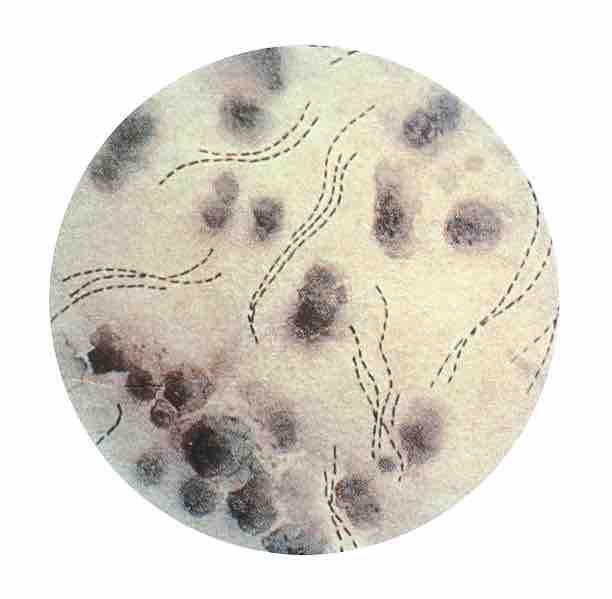Chancroid (soft chancre) is a sexually transmitted disease and can only be spread through sexual contact. It is becoming rarer worldwide with sporadic outbreaks in countries where it is uncommon. This disease is a risk factor for HIV infection.
Infectious Agent
Chancroid is caused by Haemophilus ducreyi, a gram-negative fastidious organism . It enters the body through breaks in the skin.

Haemophilus ducreyi
A microscopic image of the bacteria that causes chancroid. The stain used is Gentian Violet and the bacteria are bacilli organized in chains.
Symptoms and Diagnosis
The incubation period of chancroid is between one to fourteen days. The area of infection gets inflamed as cells of the immune system gather to fight the invading organism. Between 30-60% of the patients can also develop lymphadenopathy. Quite often, these enlarged lymph nodes can rupture through the skin and produce draining abscesses.The first symptoms after infection are small painless bumps which quickly become painful ulcers. These ulcers can be quite different in size. The base of the ulcers is usually covered in a gray or yellow substance and bleeds easily. They are typically located in specific ares for men and women. Men often have only one ulcer while women present with multiple ulcers. Women have other symptoms as well such as pain during urination and intercourse. For proper diagnosis, the other two infectious agents that can present with similar although not identical ulcers need to be excluded. Tests for the identification of Treponema pallidium (causes syphilis) and HSV (Herpes Simplex Virus, type 2) may be performed to exclude the possibility that ulcers are caused by those agents instead of Haemophilus ducreyi. For identification, samples from patients are cultured on chocolate agar. Even though serological and genetic tests can be used for identification, they are not widely used and culturing is the main tool for identifying Haemophilus ducreyi.
Treatment
Chancroid is treated with single doses of antibiotics like azythromycin or ceftriaxone, or with erythromycin for a week.